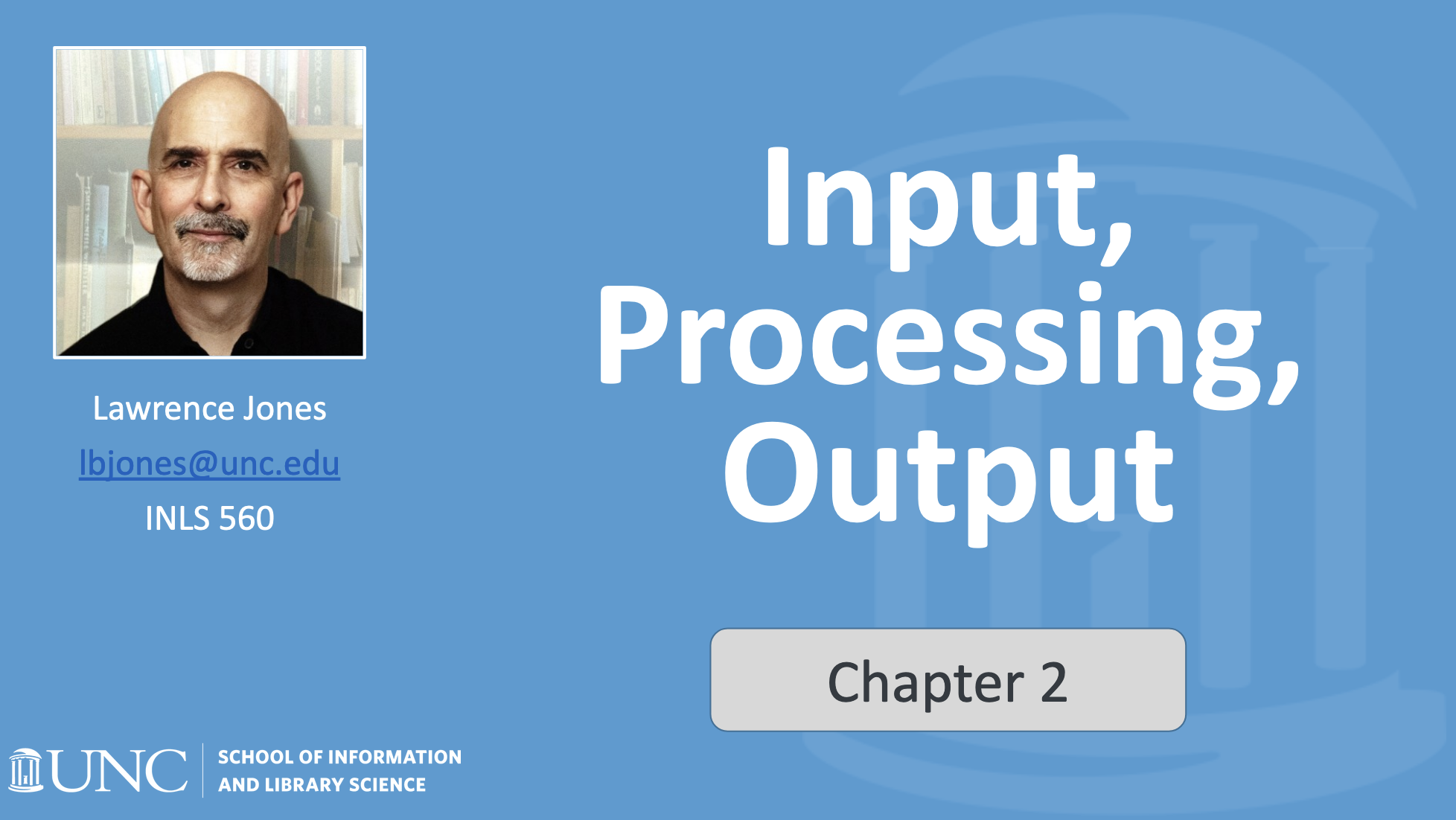Computing and Python Basics
Since we do not meet until January 22, 2024, take some time before class to cover some of the Python basics on this page before our first class. I will create some Panopto video helps and release them in advance of the first class (and notify you via email when they become availalble.)
Programming Introduction
Overview
Associated reading: https://www.pearsonhighered.com/assets/samplechapter/0/3/2/1/0321537114.pdf
Key terms: program, programming, developer, coder, software, language, coding
Hardware
Key terms: hardware, components, CPU, memory, storage, RAM, SSD, drives, input device, output device
Software
Key terms: system software, application software, OS, utility program, application software.
Storing Data
All data that is stored in a computer is converted to sequences of 0s and 1s.
Key terms: binary data, bit: binary digit, bits, byte, bytes, binary number, switch metaphor, bit pattern, character, ASCII, Unicode, two's complement, floating-point notation, digital data, pixels
Computer Languages
A computer’s CPU can only understand instructions that are written in machine language. Because people find it very difficult to write entire programs in machine language, other programming languages have been invented.
Key terms: machine language(0101101), instruction set, fetch-decode-execute cycle, assembly language(mov, mul), assembler, low-level language, high-level language, key words or reserved words
Specific Languages
See Table 1-1 in the Gaddis Text for an overview of these languages. Follow any link for more in-depth information.
Ada, BASIC, Fortran, COBOL, PASCAL, C, C++, C#, Java, JavaScript, Python, Ruby, Visual Basic
More Key terms: operators, syntax, statements, compiler, interpreter, source code, syntax error (humans understand syntax errors; compilers and interpreters do not)
Coding and Programming with Python
Python Key words
and, or, not, true, false, if, else, elif, del, from, None, as, global, nonlocal, try, assert, while, break, except, import, with, class, in, pass, yield, continue, finally, is, raise, def, for, lambda
Design and Coding Basics
Program Development cycle
Input, Processing, and Output
Supplemental: Nice overview at Runestone Academy with some interactive learning
Print Function
Every single code sample in this session will use the print() function in some form or fashion. link to first code sample
Comments
# This is a python comment on one line which is the most common way to comment.
# You can comment on multiple lines
# By using a series
# of one line comments.
"""
This is how to write a comment on
multiple lines so you don't have to
add a hashtag before each line.
"""
print('Use in-line comments sparingly.') # This is an in-line comment.
# PEP 8 recommends using inline comments sparingly.
There is a lot more to learn about coding conventions via the Python Enhancement Proposals Style Guide (PEP 8)
Variables
| MUST KNOW Terms/Concepts | Example |
|---|---|
| Assignment operator is equal symbol | = |
| Equal as a math function is two equal symbols (will practice this later) | == |
| Assignment statement | age = 18 |
| multiple assignment statement (useful for math or other short variables) | x,y,z = 0,1,2 |
| multiple assignment statement example 2 | age, name = 22, 'Chung' |
| variables are stored in memory | |
| passing variables | |
| variable must precede any code that needs to use the variable | |
| rules for naming variables | Python4Erbody |
Displaying multiple items with the print function:
name = 'Sally'
car = 'Honda Civic'
pet = 'cat'
print('My name is', name, ', and I drive a', car, ', and I have a', pet, '.')
Output with default spacing needs some "debugging" (we will deal with this in Section 2.9):
My name is Sally , and I drive a Honda Civic , and I have a cat .
variable reassignment
Data types: numbers, numeric literal, float, using the type function to determine data type
User Input
height = input("Enter your height in inches")
print("You entered", height, "for your height")
if you enter 72 you get this output:
Enter your height in inches: 72
You entered 72 for your height.
if you enter Very TaLL, I yam!! ;) lol you get this output:
Enter your height in inches: Very TaLL, I yam!! ;) lol
You entered Very TaLL, I yam!! ;) lol for your height.
Your program accepted variable number or crazy text both at strings. So the default type for input is a string, str. That is important to know because if you try to do math with string input, you will get a not-int TypeError:
height = input("Enter height to closest inch: ")
width = input("Enter width to closest inch: ")
print("Area is multiplication of height and width:",height * width)
output:
Enter height to closest inch: 6
Enter width to closest inch: 4
Traceback (most recent call last):
File "/Users/lawrencejones/Desktop/python.py", line 4, in <module>
print("Area is multiplication of height and width:",height * width)
TypeError: can't multiply sequence by non-int of type 'str'
Calculating Math in Python
salary = 2500.0
bonus = 1200.0
pay = salary + bonus
print('Your pay is', pay)
String Concatenation Formatting Data Output
first_name = input('Enter your first name: ')
last_name = input('Enter your last name: ')
full_name = first_name + ' ' + last_name
print('Your full name is ' + full_name)
More About the print Function
print('do','re','me')
print('do','re','me', sep='')
print('do','re','me', sep='*')
print('do','re','me', sep=' da-da ', end=' doobie-da') # Jazzing up do, re, mi. Notice the extra spaces.
Displaying Formatted Output with F-strings
amount_due = 5000.0
monthly_payment = amount_due / 12.0
print(f'The monthly payment is {monthly_payment}.')
Named Constants
A = π r²
PI = 3.1415926 # Pi is a constant; it should never be changed as variables are changed.
radius = float(input("input the Radius: "))
area = PI * (radius * radius)
print(f'The area of the circle with the entered radius of {radius} is {area}.')
